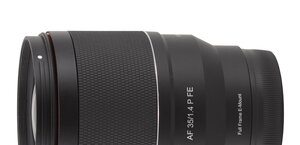Tokina AT-X DX AF 16.5-135 mm f/3.5-5.6
9. Ghosting, flares and transmission
 |
 |
 |
 |
What is the reason of such a performance? Should we blame only the anti-reflection coatings? A lens’s transmission graph, presented below, will help us answer this question.
Please Support UsIf you enjoy our reviews and articles, and you want us to continue our work please, support our website by donating through PayPal. The funds are going to be used for paying our editorial team, renting servers, and equipping our testing studio; only that way we will be able to continue providing you interesting content for free. |
- - - - - - - - - - - - - - - - - - - - - - - - - - - - - - - - - - - - - - - - - - - - - - - -
 |
In the middle of the visible spectrum the transmission reaches 85-86%. Such a result is nothing to be pleased with especially when we look at the performance in the blue and purple part of the spectrum. The lens loses up to 40% of light there so it’s not strange that most of the flares have blue-purple hue.
The quality of coatings can be assessed not by consulting the overall transmission graph (after all it depends also on the number of elements used) but by calculating the transmission or the light loss on one air-to-glass surface. The Tokina features 12 groups of elements so it has 24 surfaces to cover. It means that in the middle of the visible spectrum we lose as much as 0.6-0.7% of light. Such a result is hardly impressive. The best producers on the market can decrease the light loss to the level of 0.2-0.3% and even such “cinderellas” as a Samyang can fare better than the Tokina here…






